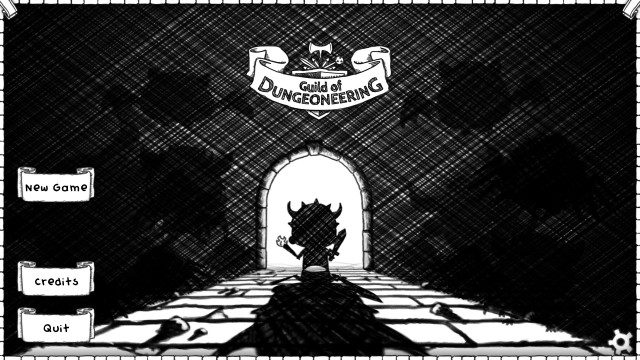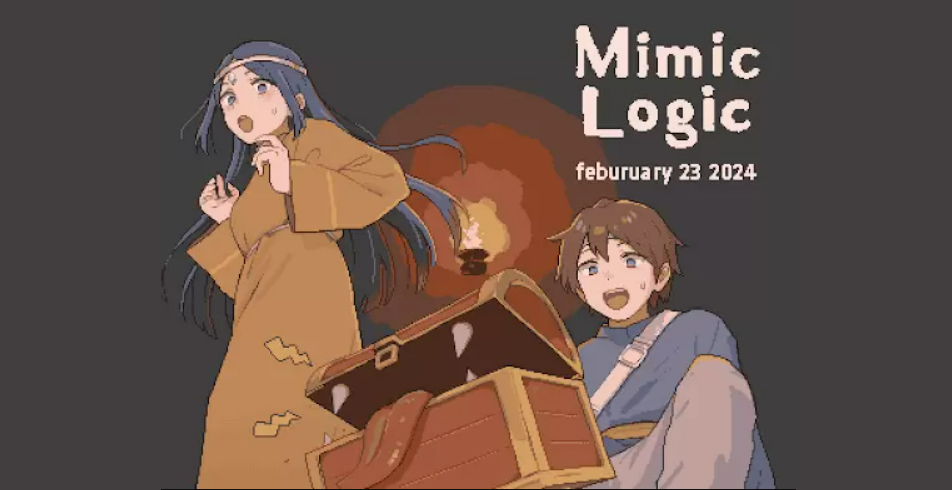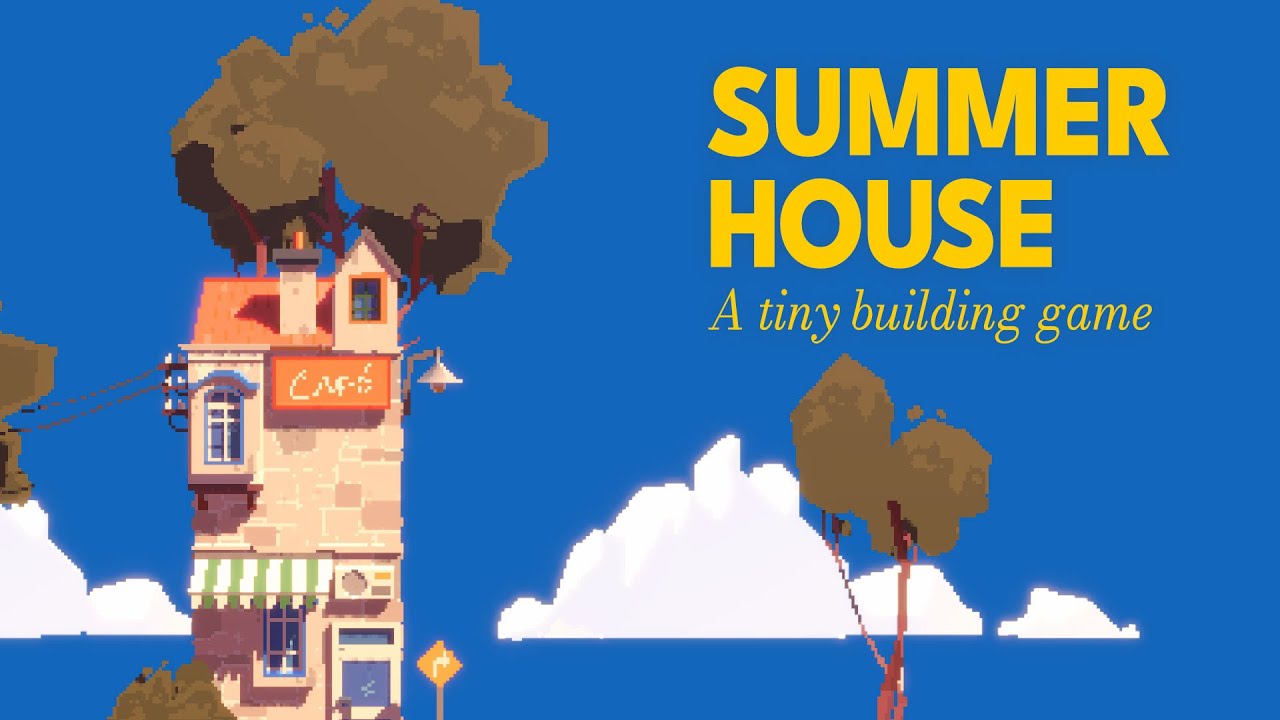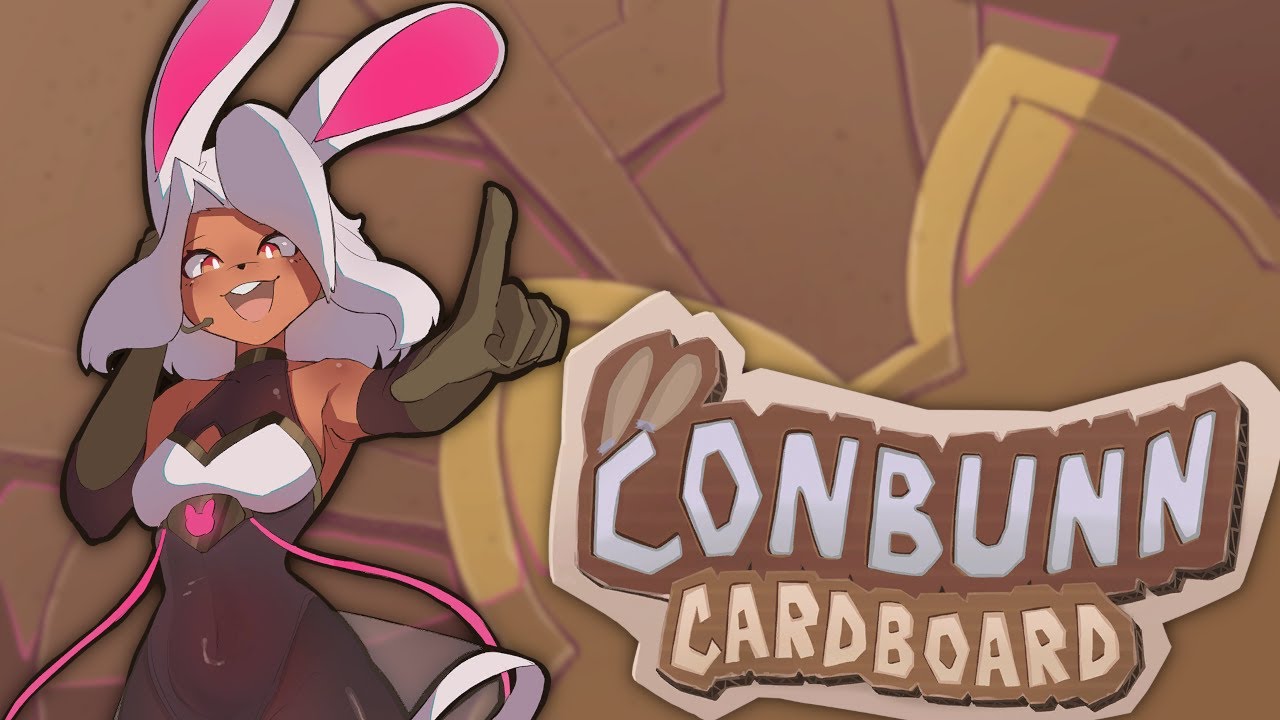Guild of Dungeoneering is a roguelike. That implies a certain degree of randomness. And Guild of Dungeoneering delivers. With a twist, of course.
The game has an incredibly charming aesthetic. Everything looks like the sort of ball point pen doodles you’d make in the margins of your notes in school. In keeping with that, the background on which almost everything is drawn is patterned like graph paper, really bringing the old school D&D dungeon look into the mix. The game is, however, decidedly monochrome. While there are a few splashes of color, mostly in the cards dealt to you on each turn, the rest of the game is either black or white, with shades of gray to fill.
Speaking of cards, let’s get into the meat of the game, shall we? Rather than the usual set up for turn based roguelikes, you do not enter a randomly generated dungeon. As a mater of fact, the dungeons are, by and large, pre set. They are, however, incomplete, and that is where you and your dungeoneer come in. Every turn, you are given a hand of five cards from a range of three types: yellow Hope cards (treasure, and rare), red Dread cards (enemies), and blue Seek cards (rooms of various types and shapes). The blue cards are obvious; you need to get to an objective in every dungeon, and the pre-set pieces only get you so far. The treasure cards are obvious as well, for what is a quest without loot? And while they may seem counter-intuitive, the red cards are of equal, if not greater importance than the others, because without them, you will likely not be able to become strong enough to see the end of the dungeon.

Upon encountering an enemy, you are dealt three cards from your (initially small) deck. Damage can either be magical or physical, and also have a range of abilities attached. Some allow you to draw an extra card into your hand, others allow you to attack before your opponent that round, and some can make an attack unblockable. Speaking of, blocking works in much the same way as damage, with the number of shields blocking that much of a particular type of damage (red for physical, blue for magic). And these cards are why fighting enemies is so important; the only way to gain extra cards outside of your dungeoneer’s class-based starting set is to obtain equipment, which can also increase their HP pool. When you run out of cards, your discard pile is shuffled and placed back in your draw pile. Enemies have cards with similar properties, the worst being those that force you to discard a card from your hand, forcing you to continue the fight with a hand permanently reduced to two. I’ve yet to see what happens if they eliminate your hand entirely, but I’d guess it isn’t good.
Speaking of classes, the game features nine at the time of this writing. From the lowly chump you start with, all the way to wizards and barbarians, there are a number of classes to choose from. Each has a general theme to their cards; rangers inherently have quickness applied to all of their attacks and use a mixture of physical and magic cards, Mimes (yes, really) imitate the effects of cards their enemies play, in addition to magic damage. Each class features a variety of ways to mix things up, in addition to an inherent skill such as the bruiser’s spiky, which causes one damage to the enemy on any turn in which you block all incoming damage. All of them have a gimmick to help you avoid death.

You get access to more classes by adding rooms to your guild. Additions that aren’t mandatory by progression cost you treasure, however. In addition to rooms, you can also purchase blessings; specific effects that you may choose before entering a dungeon. The Hug in a Bottle, for example, gives your dungeoneer one extra hit point for their first two battles, and is a good early game investment. Also purchasable are equipment unlocks, which make it possible for better equipment to appear in dungeons. Important, as all of your equipment and levels reset to zero after completing a dungeon.
Finally, the atmosphere is of note. Aside from the graphical aesthetic, the game features a number of humorous character quotes, as well as the occasional passage detailing your rivalry with another guild. Of special note are the songs sung to you by the narrator; they’re inherently snarky, and those sang after a death can reach the level of the death quotes from old Sierra games. Sure, they don’t always quite rhyme, but the effort put into them is obvious. And you’ll often find yourself humming some of the instrumentals.

Overall, Guild of Dungeoneers is worthy of your money. Once the charm wears itself thin, the game more than steps up to the task of holding your attention. May your dungeoneers be ever expendable.
Title: Guild of Dungeoneering
Developer: Gambrinous
Publisher: Versus Evil
Platform: PC
Price: $14.99 for Standard, $19.99 for Special Edition





